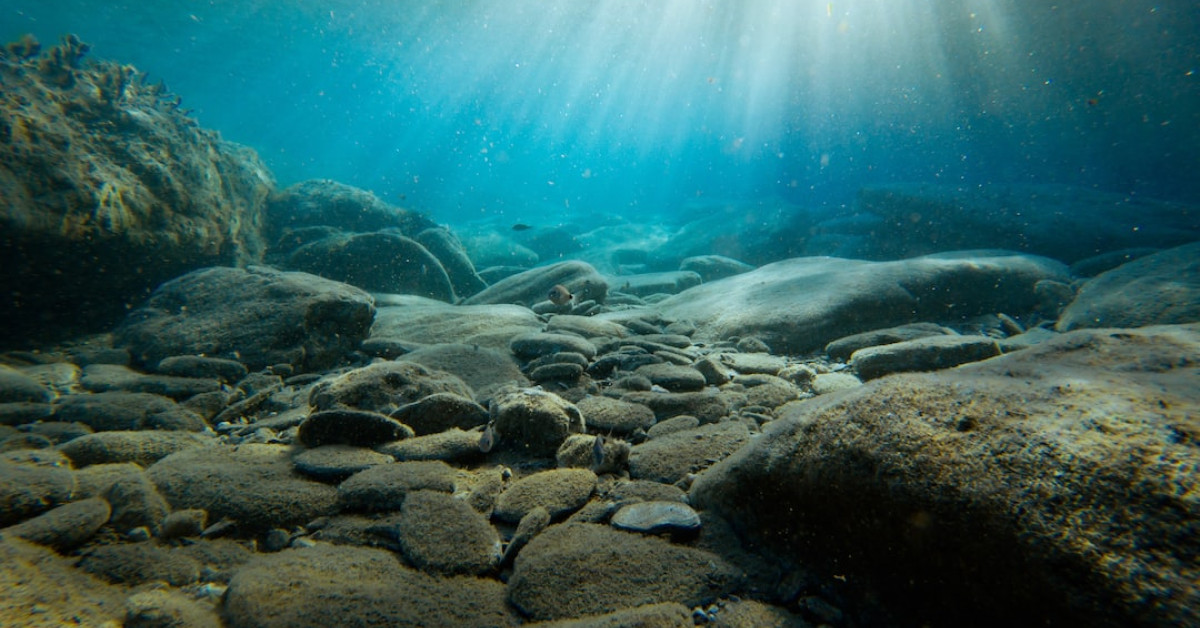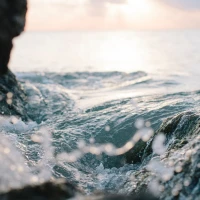Underwater diving, also known as scuba diving, is a thrilling and adventurous activity that allows individuals to explore the fascinating underwater world. Whether you are an experienced diver or a beginner eager to take the plunge, this comprehensive guide will provide you with everything you need to know about underwater diving. From the equipment required to the different types of diving, we’ll cover it all. So, grab your fins and dive in!
What is Underwater Diving?
Underwater diving is a recreational or professional activity that involves exploring the underwater environment using specialized diving equipment. It allows individuals to experience the serene beauty of the underwater world, encounter marine life, and immerse themselves in a unique and captivating environment.
The History of Underwater Diving
The concept of diving dates back thousands of years, with early records of sponge divers in ancient Greece. However, it wasn’t until the 20th century that diving began to evolve as a recreational activity black royalty. In 1943, French naval officer Jacques-Yves Cousteau and engineer Emile Gagnan invented the Aqua-Lung, which revolutionized diving by introducing the first self-contained underwater breathing apparatus (SCUBA).
Since then, diving technology has continued to evolve, making it more accessible for recreational enthusiasts and professionals alike. Today, underwater diving is a popular activity enjoyed by millions of people worldwide.
The Benefits of Underwater Diving
Aside from the sheer excitement and thrill of exploring the underwater world, diving offers numerous physical and mental health benefits. Here are some of the key advantages:
- Physical Fitness: Diving requires the use of various muscle groups, promoting strength, flexibility, and cardiovascular fitness.
- Stress Reduction: Immersing yourself in the calm and tranquil underwater environment can help reduce stress levels and enhance overall well-being.
- Improved Mental Health: The soothing effects of diving can contribute to improved mental health, including reduced symptoms of anxiety and depression.
- Enhanced Focus: Diving requires concentration and focus, which can help improve cognitive function and mental clarity.
- Adventure and Exploration: Exploring new dive sites and encountering marine life offers a sense of adventure and excitement.
Types of Underwater Diving
Underwater diving encompasses various disciplines and types, each offering a unique experience and objective. Here are some of the most popular types of diving:
1. Recreational Diving
Recreational diving is the most common form of diving and is accessible to individuals with minimal training. It is primarily focused on leisure activities and does not involve complex diving techniques or deep dives. Recreational divers often explore coral reefs, shipwrecks, and other visually appealing underwater environments.
2. Technical Diving
Unlike recreational diving, technical diving involves advanced training, specialized equipment, and a greater risk factor. Technical divers go beyond the recreational diving limits, exploring deeper depths, using mixed gases, and employing advanced diving techniques. This type of diving requires extensive knowledge, experience, and a higher level of fitness.
3. Cave Diving
Cave diving is an extreme form of diving that involves exploring underwater cave systems. It requires specialized training and equipment due to the risks involved, such as restricted spaces, low visibility, and potential entanglement hazards. Cave divers must possess advanced navigation skills and thorough knowledge of cave diving protocols.
4. Wreck Diving
Wreck diving involves exploring submerged shipwrecks, airplanes, or other artificial structures intentionally sunk to create artificial reefs. It offers a unique opportunity to discover historical artifacts, marine life, and witness the beauty of sunken structures. Wreck divers must be trained in advanced navigation techniques and have the necessary skills to safely penetrate wreck structures.
5. Night Diving
Night diving allows divers to explore the underwater world during the nighttime hours. It offers a completely different perspective, as marine life behavior changes, and certain species that are rarely seen during the day become more active. Night divers use specialized dive lights to navigate and observe the nocturnal activities of marine creatures.
Essential Equipment for Underwater Diving
To ensure a safe and enjoyable diving experience, it is essential to have the right equipment. Here are the key pieces of equipment every diver should have:
1. Mask
A diving mask creates an air space in front of the diver’s eyes, enabling clear vision underwater. It also protects the eyes from water pressure and potential debris. Masks are available in various styles and sizes to suit different face shapes and preferences.
2. Snorkel
A snorkel is a tube-like device that allows divers to breathe while on the surface of the water without having to lift their faces. It enables continuous breathing without wasting energy and conserves the air supply in the scuba tank for underwater use.
3. Fins
Fins enhance propulsion and maneuverability underwater. They help divers move efficiently through the water and conserve energy. Fins come in different styles, including open-heeled fins with adjustable straps and full-foot fins that cover the entire foot.
4. Regulator
The regulator is the primary piece of equipment that enables divers to breathe from the air cylinder. It regulates the high-pressure air in the tank to a breathable pressure level. The regulator consists of a first stage, second stage, and a submersible pressure gauge (SPG).
5. Buoyancy Control Device (BCD)
A BCD is a jacket-like device that provides buoyancy control and allows divers to maintain neutral buoyancy underwater. It also provides an attachment point for the regulator, tank, and other accessories. The BCD can be inflated or deflated to control ascent or descent during the dive.
6. Dive Computer
A dive computer is a device that tracks dive information, including depth, time, decompression limits, and ascent rates. It helps divers plan and execute safe dives by providing real-time data and audible alarms for critical information.
7. Wet Suit or Dry Suit
Wet suits and dry suits provide thermal insulation and protect divers from the cold water. Wet suits are made of neoprene and allow a small amount of water to enter, which is then warmed by the diver’s body heat. Dry suits, on the other hand, are waterproof and keep the diver completely dry.
8. Weight System
A weight system is used to counteract the buoyancy of the diver and their equipment. It consists of weight belts, weight pockets attached to the BCD, or integrated weight systems built into the BCD itself. Adjusting the weights allows divers to achieve neutral buoyancy.
It is crucial to ensure that all equipment is well-maintained, regularly serviced, and properly fitted to ensure optimal performance and safety during dives.
Diving Techniques and Safety Guidelines
While diving can be an exhilarating experience, it is essential to adhere to safety guidelines and employ proper diving techniques. Here are some key considerations for safe diving:
1. Dive Planning
Before each dive, it is important to conduct a thorough dive plan. This includes determining the maximum depth, dive duration, gas supply, decompression stops (if required), and contingency plans for emergencies. Dive plans should always be conservative and take into account the current conditions and the diver’s experience and limitations.
2. Buddy System
The buddy system is a fundamental safety practice in diving. It involves diving in pairs to ensure that both divers can assist each other in case of an emergency. Buddies should always keep each other in sight, communicate effectively underwater, and perform regular checks on each other’s equipment.
3. Equalization
Equalization is the process of equalizing the pressure within the body’s air spaces as the diver descends. This is particularly important for the ears and sinuses. The Valsalva technique, where the diver gently blows air through the nose while pinching the nostrils closed, is the most commonly used equalization method.
4. Buoyancy Control
Maintaining neutral buoyancy is crucial for safe and comfortable diving. It allows divers to hover effortlessly in the water without sinking or floating to the surface. Proper buoyancy control reduces the risk of damaging the underwater environment and conserves energy.
5. Monitoring Gas Supply
Divers must continually monitor their gas supply during dives to ensure they have enough air to complete the planned dive and conduct a safe ascent. This involves regularly checking the submersible pressure gauge (SPG) and tracking the time spent under water to avoid exceeding no-decompression limits.
6. Safety Stops and Ascent Rates
Safety stops are a standard practice for non-decompression dives to allow the off-gassing of nitrogen from the body. Divers should perform safety stops of 3-5 minutes at depths of 3-5 meters (10-15 feet) before ascending to the surface. Ascending too quickly can cause decompression sickness, also known as “the bends.”
7. Emergency Procedures
Divers should familiarize themselves with emergency procedures and be prepared to handle potential underwater emergencies such as equipment malfunctions, tiredness, and getting lost. This includes practicing skills like sharing air, deploying surface marker buoys (SMBs), and administering basic first aid.
By following these safety guidelines and employing proper diving techniques, divers can ensure a safe and enjoyable underwater experience.
Marine Life Encounters
One of the most captivating aspects of diving is the opportunity to encounter a vast array of marine life. Whether it’s the vibrant coral reefs teeming with tropical fish or the majestic presence of larger marine creatures, underwater encounters are truly mesmerizing. Here are some popular marine life encounters you may experience while diving:
1. Coral Reefs
Coral reefs are diverse and vibrant ecosystems, home to countless species of fish, invertebrates, and plants. The intricate structures of corals provide a habitat for a rich variety of marine life, making them popular destinations for divers. Exploring coral reefs allows divers to witness the dazzling colors and natural wonders of the underwater world.
2. Tropical Fish
The tropical waters of the world host an incredible array of colorful fish species. From the majestic angelfish and the playful clownfish to the elusive seahorses and the fascinating parrotfish, encountering these vibrant creatures is a highlight of any dive. Tropical fish often populate coral reefs and offer mesmerizing underwater displays.
3. Sea Turtles
Encountering sea turtles is a truly remarkable experience. These gentle marine creatures can be found in various diving destinations worldwide. Diving alongside a sea turtle allows divers to witness their grace and beauty as they glide effortlessly through the water. It’s important to approach sea turtles with caution and respect their natural habitat.
4. Sharks
Sharks are often considered the kings of the ocean. While encountering sharks can be thrilling, it is crucial to remember that most species are harmless to humans and play a crucial role in maintaining the balance of marine ecosystems. Popular shark species encountered during dives include the reef shark, nurse shark, and the iconic hammerhead shark.
5. Manta Rays
Manta rays are known for their graceful movements and impressive size. These gentle giants can reach lengths of up to 9 meters (30 feet) and have wingspans exceeding 5 meters (16 feet). Diving with manta rays is an awe-inspiring experience as they effortlessly glide through the water, captivating divers with their elegance.
6. Whale Sharks
Whale sharks are the largest fish species in the world. Despite their size, they are completely harmless to humans, feeding only on plankton and small fish. Diving with whale sharks offers a rare opportunity to witness these magnificent creatures up close. It is essential to maintain a respectful distance and avoid disturbing their natural behavior.
Encounters with marine life provide divers with a deeper appreciation of the ocean’s biodiversity and the importance of conservation efforts to protect these fragile ecosystems.
Tips for Choosing Dive Destinations
When selecting a dive destination, several factors come into play, including accessibility, marine biodiversity, and diving conditions. Here are some tips to consider when choosing a dive destination:
1. Research and Recommendations
Before selecting a dive destination, conduct thorough research and seek recommendations from fellow divers or reputable dive travel agencies. Consider factors such as water visibility, marine life diversity, dive site accessibility, and safety records. Online resources and travel forums can provide valuable insights from experienced divers.
2. Marine Biodiversity
Choose destinations known for their rich marine biodiversity. Areas with vibrant coral reefs, an abundance of fish species, and the potential for larger marine creature encounters offer more memorable dive experiences. Popular destinations include the Great Barrier Reef in Australia, the Maldives, the Red Sea, and the Galapagos Islands.
3. Diving Conditions
Consider the prevailing diving conditions at the chosen destination. Factors such as water temperature, visibility, and currents can significantly impact dive experiences. Ensure that the diving conditions align with your comfort level and experience. Some dive locations may require advanced certifications and experience due to challenging conditions.
4. Dive Operator Reputation
Research the reputation and credibility of dive operators in the chosen destination. Choose operators with experienced instructors, well-maintained equipment, and an emphasis on safety. Reviews and testimonials from past customers can provide valuable insights into the quality of the diving experience offered by different operators.
5. Environmental Conservation Efforts
Support destinations that prioritize environmental conservation and sustainable diving practices. Choose destinations that actively engage in conservation initiatives, promote responsible diving, and follow guidelines to protect marine life and ecosystems. Responsible diving practices ensure future generations can enjoy the wonders of the underwater world.
Conclusion
Underwater diving offers a gateway to a mesmerizing world filled with vibrant marine life, intriguing landscapes, and unforgettable encounters. Whether you are drawn to the adventure of exploring shipwrecks or the tranquility of coral reefs, underwater diving provides a unique and awe-inspiring experience.
By understanding the different types of diving, ensuring proper equipment and safety measures, and selecting dive destinations wisely, you can embark on a journey that combines adventure, exploration, and a deep connection with the wonders of the ocean.
So, take that leap of faith, immerse yourself in the underwater world, and discover the magic that lies beneath the surface. Happy diving!










